Regenerative medicine uses different techniques to regenerate, repair, or replace damaged cells, tissues, and organs. Although the concept of regenerative medicine has been around for a long time, we’ve only developed adequate technologies and therapies in the late 20th century. Since then, regenerative medicine therapies have become increasingly better and more popular. Here, you can discover how regenerative medicine works, what it can be used for, and where to get regenerative medicine therapy in Woodlands, Texas.

What Is Regenerative Medicine?
Regenerative medicine focuses on repairing or replacing damaged cells, tissues, and organs. It involves using stem cells, growth factors, and other techniques to stimulate the body’s natural healing processes. The goal is to improve the patient’s quality of life by kickstarting healing mechanisms and restoring the normal function of damaged or diseased tissues and organs.
The amazing thing about regenerative medicine is that it has the potential to revolutionize the way we treat a wide range of chronic conditions. So, things like heart disease, neurological disorders, diabetes, and spinal cord injuries could all get reliable treatments in the near future, thanks to regenerative medicine. That could be possible through tissue engineering, stem cell therapy, gene therapy, and other innovative techniques.
Regenerative medicine seeks to repair or replace damaged tissues with the help of innovative techniques and technologies that stimulate the body’s natural healing processes.
What Is Regenerative Medicine Used for?
Regenerative medicine has the potential to heal and replace tissues and organs damaged by disease, injuries, or old age. It could be used for chronic conditions and acute injuries, with a wide array of possible applications. In addition, it could help overcome congenital disabilities.
Here are the most critical areas where regenerative medicine therapies can help you today or in the near future:
Musculoskeletal Injuries
Regenerative medicine techniques, such as tissue engineering, stem cell therapy, and platelet-rich plasma (PRP) therapy, are used to repair and regenerate damaged cartilage, ligaments, muscles, and tendons. So, the primary use of these therapies is to overcome injuries. However, they can also help with conditions like osteoarthritis or tendonitis.
Chronic Wounds
Growth factors and stem cells are the most popular regenerative medicine therapies being explored for chronic wounds, such as pressure ulcers and diabetic foot ulcers. These potential treatments could significantly improve the quality of life of people struggling with these persistent conditions.
Cardiovascular Disease
Today, we know more about cardiovascular health than ever before. However, we still struggle to keep our cardiovascular systems healthy due to poor diets, lack of activity, insufficient sleep, and excessive stress. This leads to a higher incidence of cardiovascular disease. That’s why regenerative medicine experts extensively study stem cell therapy and tissue engineering to treat cardiovascular diseases like heart attacks and heart failure.
Diabetes
Stem cell therapy and other regenerative medicine approaches are being studied as potential treatments for diabetes. The goal is to restore the normal function of insulin-producing cells and allow people with diabetes to live normal lives.
Neurological Conditions
Neurological conditions are complex and often don’t have adequate treatment. That’s why regenerative medicine explores using these therapies to treat Alzheimer’s disease, Parkinson’s disease, and other conditions. In addition, stem cell therapy and different approaches have the potential to help people who suffered a spinal cord injury.
Organ Failure
Regenerative medicine aims to repair and replace damaged tissues and organs. That’s why researchers study its potential use for liver, kidney, and heart failure. It appears that stem cell therapy and tissue engineering could be vital tools for preventing and recovering from organ failure.
Regenerative medicine therapies have the potential to help with various conditions and injuries, which is why this branch of medicine has been extensively studied in recent years.
Who Is a Good Candidate for Regenerative Medicine Therapy?
Good candidates for regenerative medicine therapy include patients with:
- Osteoarthritis
- Joint pain
- Ligament injuries
- Tendonitis
- Rotator cuff tears
- Sciatica
- Chronic neck or back pain
- Fractures
In addition, regenerative medicine could help people with diabetes, cardiovascular disease, neurological conditions, organ failure, and more.
Regenerative medicine is mainly used to overcome chronic pain and injuries of the musculoskeletal system.
Regenerative Medicine Therapy in Woodlands, Texas
Progressive Pain and Rehabilitation offers regenerative medicine therapy in Woodlands, Texas. In our center, you can find appropriate regenerative medicine modalities for chronic pain, acute pain, and sports injuries. With the help of our regenerative medicine expert, Dr. Edward Nash, you’ll quickly be able to heal from your injuries and start living the life you deserve.
Click here to schedule an appointment at Progressive Pain and Rehabilitation and discover how our non-surgical treatments can help you.
Feel free to visit our Progressive Rejuvenation website.






 346-220-8063
346-220-8063